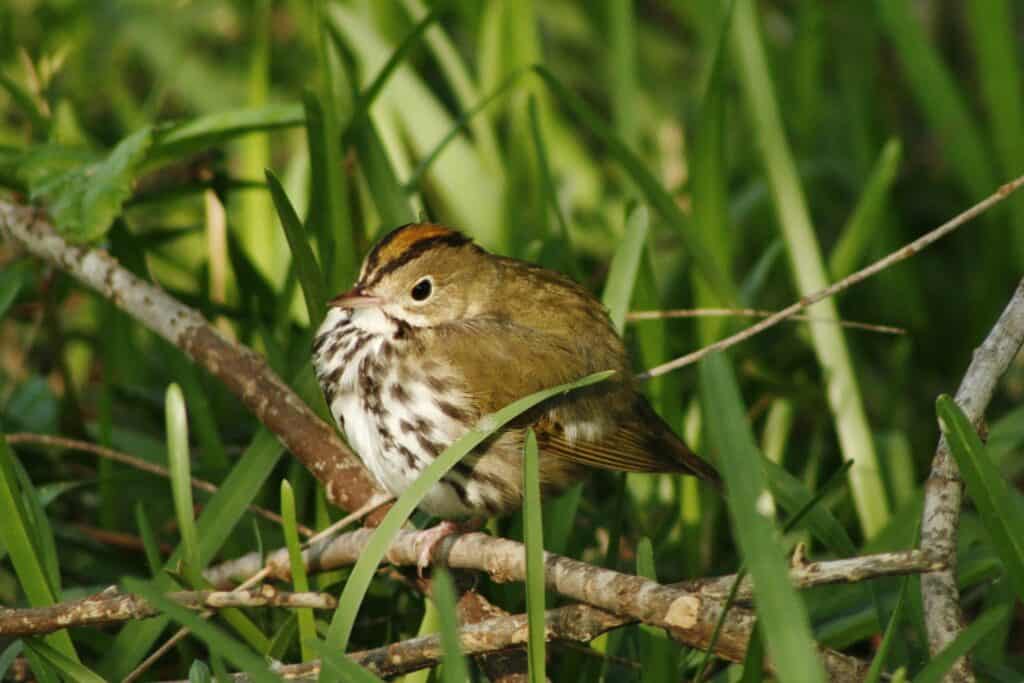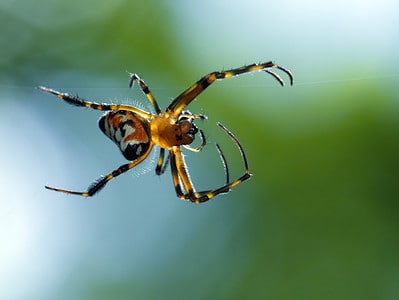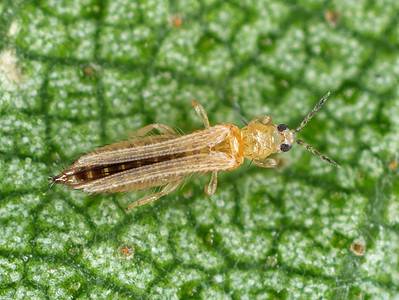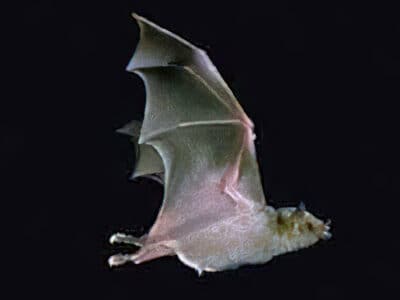Ovenbird
Seiurus aurocapilla
The ovenbird is named for its unusual nest, which is shaped like an oven!
Advertisement
Ovenbird Scientific Classification
- Kingdom
- Animalia
- Phylum
- Chordata
- Class
- Aves
- Order
- Passeriformes
- Family
- Parulidae
- Genus
- Seiurus
- Scientific Name
- Seiurus aurocapilla
Read our Complete Guide to Classification of Animals.
Ovenbird Conservation Status
Ovenbird Facts
- Prey
- Insects, spiders, snails, worms, other invertebrates
- Main Prey
- Insects, including larvae
- Name Of Young
- Chicks
- Group Behavior
- Pair
- Fun Fact
- The ovenbird is named for its unusual nest, which is shaped like an oven!
- Estimated Population Size
- 26 million
- Biggest Threat
- Forest fragmentation
- Most Distinctive Feature
- Olive green feathers
- Distinctive Feature
- Olive green feathers, streaked white breast, white eye ring, orange crest bordered with black, black stripes on cheeks
- Other Name(s)
- Seiurus aurocapilla; Motacilla aurocapilla
- Temperament
- Territorial
- Wingspan
- 7.5 to 10.2 inches
- Incubation Period
- 11 to 14 days
- Age Of Independence
- 17 to 30 days
- Age Of Fledgling
- 7 to 10 days
- Habitat
- Dense forest
- Predators
- Owls, hawks, and domestic cats. Nest predators also include snakes, squirrels, chipmunks, foxes, skunks, bears, raccoons, white-tailed deer, hawks, crows, and blue jays.
- Diet
- Omnivore
- Lifestyle
- Diurnal
- or Nocturnal Depending on Region and Season
- Favorite Food
- Insects
- Common Name
- Ovenbird
- Number Of Species
- 1
- Average Clutch Size
- 4
- Nesting Location
- On the ground
Ovenbird Physical Characteristics
- Color
- Brown
- Black
- White
- Green
- Pink
- Olive
- Skin Type
- Feathers
- Lifespan
- Average 2.7 years; Longest recorded 11 years
- Weight
- 0.67 to 1 ounce
- Length
- 4.3 to 6 inches
- Age of Sexual Maturity
- 1 year
- Venomous
- No
- Aggression
- Low
View all of the Ovenbird images!
The ovenbird is named for its unusual nest, which is shaped like an oven!
The ovenbird is kind of punk rock. It wears a jacket of olive feathers and has an orange mohawk-like stripe down the middle of its crown, lined on either side in black. When it gets agitated it can raise this stripe to form a crest, and yell down from a high branch, “Tea-cher, tea-cher, tea-cher!” The female ovenbird is not satisfied to build an ordinary nest. Instead she creates something that looks an awful lot like a primitive pizza oven on the forest floor, then proceeds to dump leaves and twigs on it for camouflage. This is no ordinary bird.
Incredible Ovenbird Facts
- Female ovenbirds build nests that look like ovens. That’s where they got their name.
- Ovenbirds migrate from as far north as Canada to winter as far south as northern South America.
- Robert Frost once wrote a poem about this bird.
- Males of this species sing a lot. Females rarely sing.
- Female ovenbirds will feign an injury to lure predators away from the nest.
- Ovenbirds have a lot of potential nest predators, from bears to chipmunks.
Where to Find the Ovenbird
The ovenbird is a migratory warbler species. It can be found in the United States and Canada during its breeding season. The breeding range extends as far south as the Chattahoochee-Oconee National Forests in Georgia to the Ouachita National Forest in Arkansas. From August through October, the ovenbird flies south, to Mexico, Central America, the Caribbean, and even far northern South America. It returns from its winter habitat in the spring, from March through May.
This bird lives in forests with thick canopies and an abundance of leaf litter. It prefers to be in wooded areas with relatively little undergrowth. It makes its nest on the forest floor, in a small clearing among fallen leaves because that is where it forages for food. Ovenbirds are not usually found in open areas, although they do not seem to be averse to nesting near the edges of forests. They probably would not live too close to people, unless those people happened to also live in the woods.
Ovenbird Scientific Name
The scientific name of the ovenbird is Seiurus aurocapilla. This bird is the only species in its genus. It was originally named Motacilla aurocapilla by Linnaeus in 1766. Aurocapilla means golden-haired in Latin, therefore it is likely a reference to the orange stripe that adorns its crown. The common name, ovenbird, is a reference to the bird’s oven-shaped nest.
The ovenbird should not be confused with the red ovenbird, Rufous horneo, which is native to South America and is the national bird of both Argentina and Uruguay. Although both were named for their oven-shaped nests, S. aurocapilla belongs in the Parulidae family, whereas R. horneo belongs in the Furnariidae family.
Ovenbird Appearance

The ovenbird is kind of punk rock. It wears a jacket of olive feathers and has an orange mohawk-like stripe down the middle of its crown, lined on either side in black.
©Kathryn Carlson/Shutterstock.com
The ovenbird is a large warbler. It is smaller than most sparrows, reaching a length of about 4.3 to 6 inches. It has a wingspan between about 7.5 and 10.2 inches. Its weight can vary between about 14 and 28.8 g, or roughly half an ounce to an ounce. It has slender pink legs and feet, and its short, pointed bill is black on top and pinkish on the bottom
Ovenbirds are not sexually dimorphic, therefore, the males and females look the same. They are olive brown on their upper parts, with more of an olive green tint on their flanks. They have a white underside, with lots of black streaks on their breasts. Their tail is relatively long and usually tilted up as it walks on the ground and forages.
The ovenbird’s face is green, with a black stripe running from the base of its beak down its white neck on each side. It also has a white ring around its eyes. An orange stripe, bordered by black stripes on either side, crowns the bird’s head like a mohawk. The bird can raise this stripe into a crest, which is sometimes used in a defensive show.
Ovenbird Behavior
The ovenbird is often recognized by its call. The call is described as a rapid “tea-cher, tea-cher, tea-cher,” which is repeated several times per second. Males sing often, from perches high in the trees or on the ground, to declare their territory and to find a mate. Females, however, rarely sing, which makes them harder to spot.
The ovenbird walks on the ground, and does not hop like other songbirds, as it forages for food. It recognizes locations that are good sources of food and returns to them.
Ovenbirds are territorial, both as single birds and in pairs. They stick mainly to higher ground within their breeding range, leaving lower lying areas to other warblers. They are defensive of their nests. When other birds enter their territory, ovenbirds may engage in defensive displays and loud calling.
Diet
Ovenbirds forage for food in the leaf litter on the forest floor. They eat insects, both adult and larval, and other invertebrates, including spiders, snails and worms. Sometimes these birds will also eat seeds and berries, particularly during winter. Both females and males feed the juveniles, usually with small insects and insect larvae.
Ovenbird Reproduction
Male ovenbirds sing loudly to attract a mate. These birds are monogamous, and sometimes stay together for life. Once a male has successfully found his mate, the business of reproduction begins.
The ovenbird was named for its unusual nest. The female bird builds the nest on the ground, in a small clearing. The nest is made of twigs, leaves, grass, bark, and other fibers. She fashions it in the shape of a dome, complete with a roof and an entrance on the side, and lines it with animal hair. When she is finished, she drops leaves and twigs on top of it to disguise its presence. The nest resembles a primitive outdoor oven.
Once the nest is complete the female lays between 3 to 6 eggs. She incubates the eggs alone, waiting 11 to 14 days for her offspring to hatch. After that, for the next 7 to 10 days, the juveniles stay in the nest. They begin to wander around close to the nest after that, but they are not independent for another 10 to 20 days.
Ovenbirds typically have only one brood per year, but can have up to three in response to external pressures. The birds do not usually reuse their nests, but once they are finished with it, other creatures of the forest may call it home.
Predators
Researchers studying nest behavior in ovenbirds identified a number of potential nest predators. These include snakes, squirrels, chipmunks, foxes, skunks, bears, raccoons, white-tailed deer, hawks, crows, and blue jays.
Owls, hawks and domestic cats may also prey on adult ovenbirds. Often these birds will stay very still to try to avoid being detected by a predator. Sometimes the males will engage in defensive posturing, including raising their crest, raising their tail, and dropping their wings while making a lot of noise. Females may feign an injury in order to try to draw a predator away from their nest. Both sexes may escape to a high branch if threatened.
Other Threats
One of the problems ovenbirds face is a nest parasite called the brown-headed cowbird. This lazy bird is known for laying its eggs in the nests of songbirds and then taking off, leaving the unsuspecting parents to raise its youngsters as their own. Nest parasitism by the brown-headed cowbird caused the black-capped vireo to become endangered in 1987. Fortunately for the ovenbird, its chicks have a shorter incubation period than the cowbirds, so the interlopers are not always successful.
Ovenbirds face several other threats as migratory birds. For instance, they are prone to window strikes, especially on office buildings and high rises. They have also died in encounters with cruise ships on the way to their Caribbean winter grounds.
Scientists believe the biggest threat to the ovenbird is forest fragmentation. As trees are taken down, whether for logging or development, the habitat of these forest-dwelling birds is disrupted. Disturbances to the winter habitat can be just as damaging as those in the summer breeding grounds.
Lifespan of the Ovenbird
Researchers completed a ten-year study of ovenbirds in Michigan. They estimated that the average lifespan of the birds was approximately 2.7 years. However, the longest living individual known to date was a banded bird that lived to be 11 years old.
The Ovenbird in Literature
The great American poet, Robert Frost, wrote a poem about the ovenbird. Interestingly, the sonnet is thought to be a metaphor for the passage of time, with the ovenbird representing the author himself.
The Ovenbird
There is a singer everyone has heard,
Loud, a mid-summer and a mid-wood bird.Who makes the solid tree trunks sound again.
He says that leaves are old and that for flowers
Mid-summer is to spring as one to ten.
He says the early petal-fall is past
When pear and cherry bloom went down in showers
On sunny days a moment overcast;And comes that other fall we name the fall.
Robert Frost
He says the highway dust is over all.
The bird would cease and be as other birds
But that he knows in singing not to sing.
The question that he frames in all but words
Is what to make of a diminished thing.
Similar Animals
- Black-and-white warbler – This warbler is streaked in black and white and shares much of its range with the ovenbird.
- Magnolia warbler – This masked warbler winters on cocoa plantations.
- Canada warbler – This yellow-bellied warbler flies up to 3000 miles to winter in South America.
Ovenbird FAQs (Frequently Asked Questions)
What does the ovenbird look like?
The ovenbird is olive brown. Its underside is white with black streaks on its breast. It has pink legs and feet and a relatively long tail. Its short, pointed beak is black on top and pinkish on the bottom, and it has a white ring around its eyes. It has a black stripe under its cheeks, and an orange stripe on top of its head, bordered by black stripes.
How many varieties of ovenbird warblers exist?
There is just one ovenbird species in its genus, the Seiurus aurocapilla. There is, however, an unrelated bird known as the red ovenbird in the Furnariidae family.
What makes the ovenbird special?
The female ovenbird builds a nest that looks like a primitive outdoor oven.
Where do ovenbirds live?
Ovenbirds are migratory birds that live in heavily wooded areas. They are found in the United States and Canada during breeding season, and in Mexico, Central America, the Caribbean, and far northern South America during the winter.
What do ovenbirds eat?
Ovenbirds forage in leaf litter for insects, larvae, worms, snails, spiders and other invertebrates. They also sometimes eat seeds and berries in the winter.
How long do ovenbirds live?
Ovenbirds live on average 2.7 years, but the oldest recorded individual was 11 years old.
Are ovenbirds rare?
The ovenbird is not rare. It is listed on the IUCN Red List as a species of least concern with an estimated 26 million mature individuals. However, climate change and forest fragmentation due to logging and development could cause a decline in the range of this species.
Thank you for reading! Have some feedback for us? Contact the AZ Animals editorial team.
Sources
- Green Mountain Audubon Society / The Ovenbird: A Robert Frost Poem with Annotations by Huck Gutman, Available here: https://www.greenmountainaudubon.org/the-hermit-thrush/the-ovenbird-a-robert-frost-poem-and-analysis-by-huck-gutman
- Oxford Academic / Ornithology / The Auk, Volume 123, Issue 1 / Brady J. Mattsson, Gerald J. Niemi, Available here: https://academic.oup.com/auk/article/123/1/82/5562552
- Sora / Longevity of the Ovenbird / Harry W. Hann, Available here: https://sora.unm.edu/sites/default/files/journals/jfo/v019n01/p0005-p0012.pdf
- xeno-canto, Available here: https://xeno-canto.org/species/Seiurus-aurocapilla

















